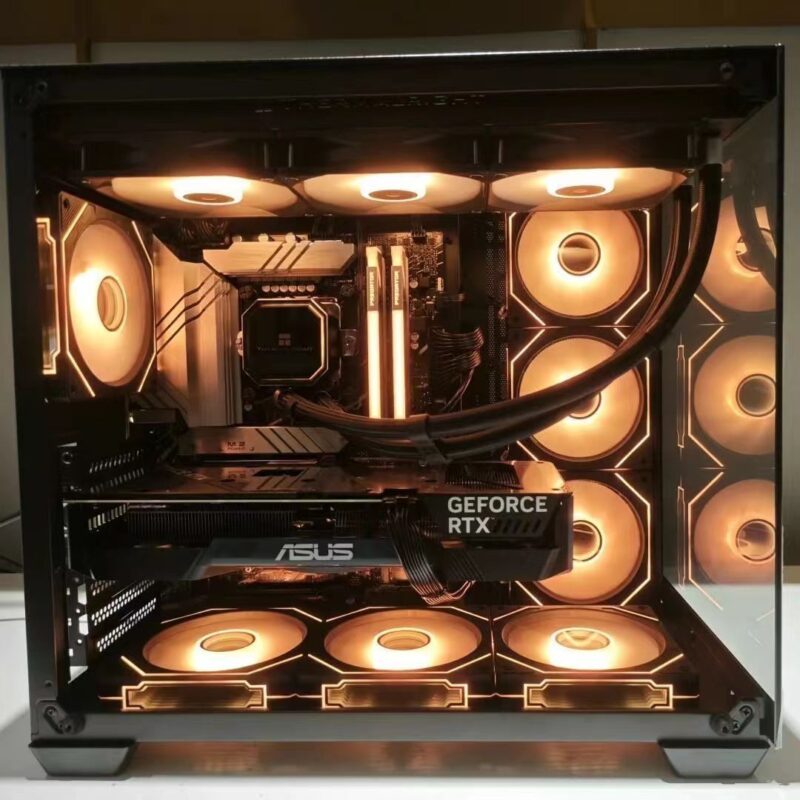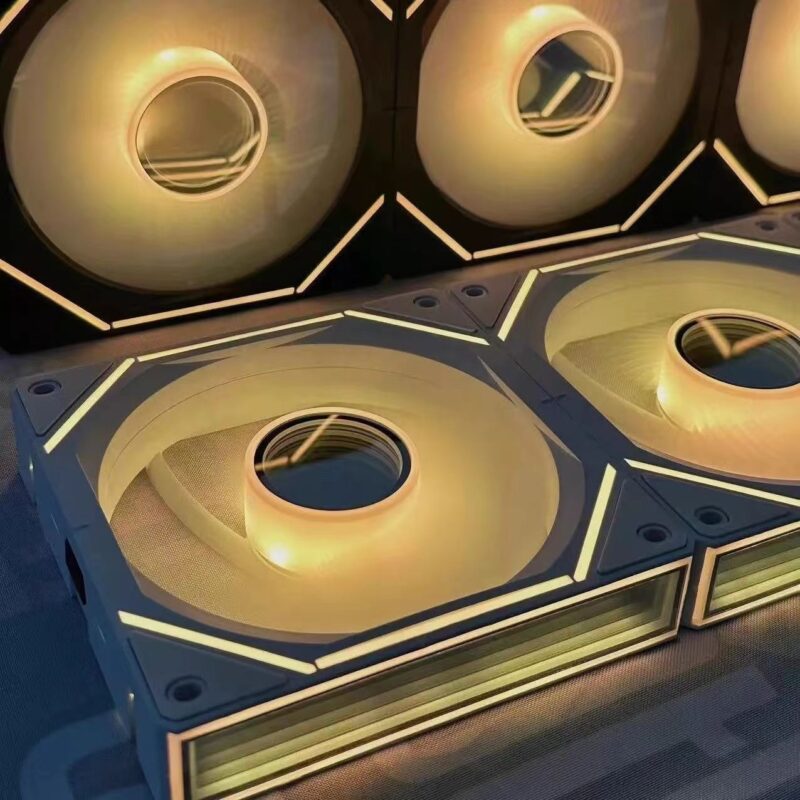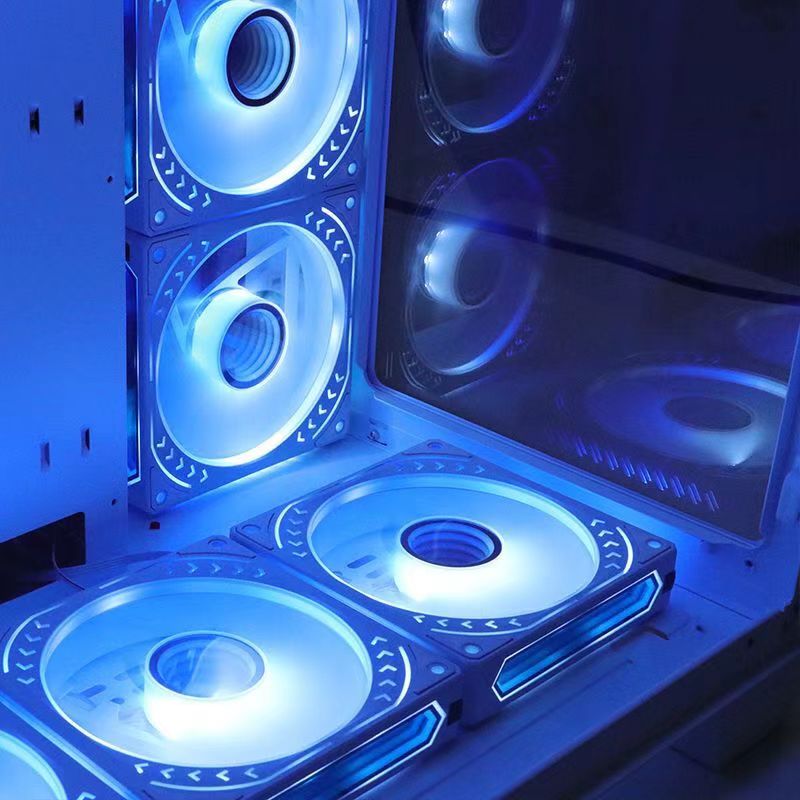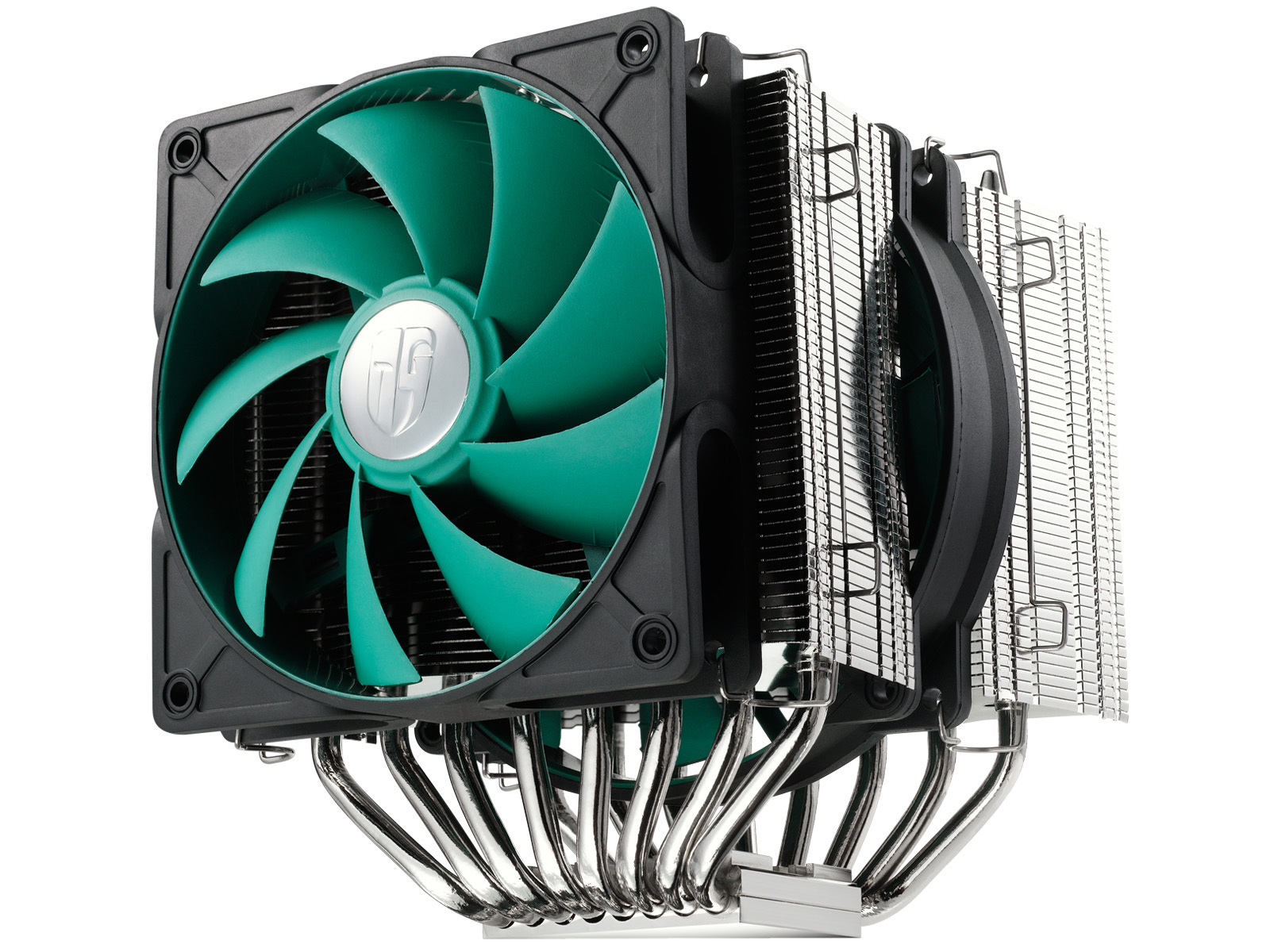- First, the core advantages of the fan radiator
Efficient heat dissipation
Multi-heat pipe fin structure: Copper heat pipes quickly conduct CPU/GPU heat, aluminum fins expand the heat dissipation area, and combine with high-volume fans to achieve efficient heat exchange;
Mature air cooling technology: no complex maintenance, far more reliable than water cooling systems (to avoid the risk of leakage), especially suitable for long-term high-load scenarios (such as servers, rendering workstations).
Silent and intelligent control
PWM intelligent speed regulation: adjust the speed in real time according to the temperature, keep silent (<20dB) when low load, and fully dissipate heat when high load;
Advanced bearing technology: Hydraulic bearing, magnetic levitation greatly reduce friction noise and extend the service life to more than 100,000 hours.

Broad compatibility and flexible adaptation
Multi-platform support: Compatible with mainstream interfaces such as Intel LGA 1700 and AMD AM5 through standardized fasteners;
Diverse sizes: Push-down, tower, and dual-tower designs meet the cooling needs of ITX mini hosts to full-tower chassis.
Cost-effective and durable
Cost advantage: Compared with integrated water cooling, the price of air cooling with the same performance is 30%-50% lower;
Anti-aging ability: no hidden danger of liquid evaporation, metal structure is resistant to high temperature and corrosion, and is suitable for harsh environments (such as industrial scenarios with a lot of dust).
Personalization and aesthetic design
RGB light effect linkage: support the synchronization of the gods and lights of mainstream motherboards, and improve the visual expression of the host;
Minimalist industrial style: The pure black/silver radiator with matte design is suitable for business and geek style.
- 2. Industry prospects: intelligent, green and scenario segmentation
High-performance computing demand-driven upgrades
AI and data centers: With the power consumption of AI chips (such as NVIDIA H100) exceeding 700W, high-pressure turbofan and vapor chamber technologies have become a rigid need for heat dissipation.
E-sports and overclocking: Extreme overclockers are pushing for “brute force fans” and composite heat pipe design iterations, aiming to suppress CPU power consumption above 300W.
Silent technology penetrates the consumer market
Home and office scenarios: Low-noise design (<15dB) has become the focus of competition for mainstream brands, such as Noctua’s NF-A12x25 fan;
Smart home integration: The radiator is linked to the smart home system to automatically adjust the air duct of the chassis according to the ambient temperature.
Material & Structural Innovation

Graphene coating: improve the thermal conductivity of heat pipes, laboratory data shows that the thermal conductivity can be increased by 30%;
3D vapor chambers: replace traditional heat pipes for more uniform heat distribution (e.g. Cooler Master V8 3DVC);
Lightweight composites: Carbon fiber reinforced plastic (CFRP) balances strength and weight to optimize heat dissipation efficiency in ITX small chassis.
Green energy saving and sustainable development
Low-power motor: Brushless DC motor (BLDC) is adopted, and the energy consumption is reduced by more than 20%;
Application of environmentally friendly materials: bio-based plastic fan blades, recyclable metal frame to reduce carbon footprint;
Long-life design: Reduces the frequency of replacement, in line with the requirements of the European Union’s Circular Economy Action Plan.
Customized solutions for subdivided scenarios
Dedicated to mini hosts: ultra-slim push-down cooler supports Intel NUC, Steam Deck and other devices;
Industrial dustproof design: IP5X dustproof certified fans are suitable for factory automation control hosts;
Passive heat dissipation assistance: Combine heat pipes and chassis air ducts to achieve a “zero noise” office PC solution.

- 3. Challenges and future breakthrough directions
Thermal efficiency ceiling
Air cooling is limited by the thermal conductivity of the air, and needs to be integrated with liquid cooling, semiconductor cooling and other technologies (such as hybrid heat dissipation modules).
Noise is balanced with performance
Development of new hydrodynamic models of fan blades, such as bionic shark skin textures, to reduce turbulent noise.
Intelligent management ecology
Integrated temperature sensor and AI algorithm to achieve a global cooling strategy across hardware (CPU/GPU/SSD).
- Conclusion: The “cool” revolution of radiators
Fan coolers never stop evolving – from a mere “cooling tool” to smart hardware that combines performance, quietness, and aesthetics. With the explosive growth of computing power demand and the diversification of user scenarios, coolers will be more deeply integrated into the PC ecological chain in the future, and will become a key role in ensuring the stable operation of the digital world.
According to the Global PC Cooling Market Report, the fan cooler market size will reach $5.8 billion in 2028, with a compound annual growth rate of about 7.2%. Whether you’re a geek gamer, a business user, or an environmental advocate, you’ll find your own answers in this “calm” revolution.









 LED HOST RADIATOR WHITE
LED HOST RADIATOR WHITE
 LED HOST RADIATOR BLACK
LED HOST RADIATOR BLACK
 HOST RADIATOR
HOST RADIATOR
 LED HOST RADIATOR PINK
LED HOST RADIATOR PINK

 Computer CPU Cooler WHITE 1
Computer CPU Cooler WHITE 1
 Computer CPU Cooler WHITE 2
Computer CPU Cooler WHITE 2
 Computer CPU Cooler BLACK
Computer CPU Cooler BLACK

 Square LED Host Radiator WHITE
Square LED Host Radiator WHITE
 Square LED Host Radiator BLACK
Square LED Host Radiator BLACK

 LED Host Radiator
LED Host Radiator

 Watch Accessories
Watch Accessories
 Watch Accessories 1
Watch Accessories 1
 Watch Accessories 2
Watch Accessories 2
 Watch Accessories 3
Watch Accessories 3
 Watch Accessories 4
Watch Accessories 4
 Watch Accessories 5
Watch Accessories 5
 Watch Accessories 6
Watch Accessories 6
 Watch Accessories 7
Watch Accessories 7





 3D Printed Portrait Sculptures
3D Printed Portrait Sculptures
 Car Mural (LED Light) 1
Car Mural (LED Light) 1

 Classic Black Tea
Classic Black Tea
 Classic Green Tea
Classic Green Tea
 Coarse Leaves Black Tea
Coarse Leaves Black Tea
 Old Tree Black Tea
Old Tree Black Tea
